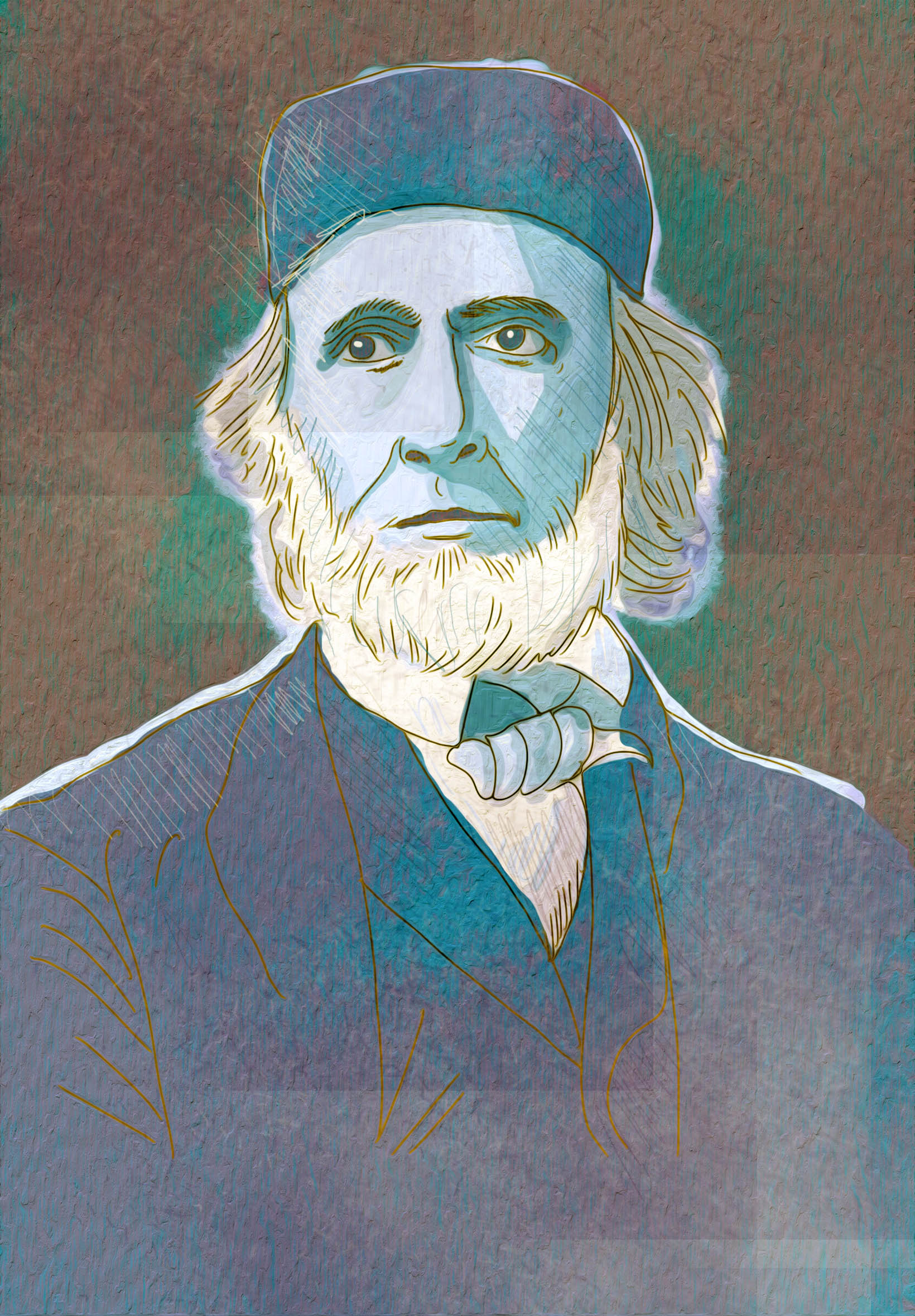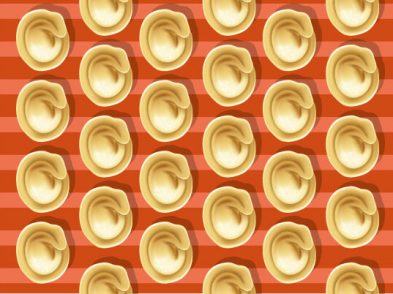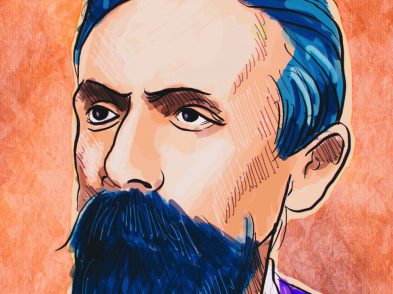Elegant spirituality in content and form as well as purity in the marble from the Seravezza quarries near Carrara is represented in the life-size, female nude in chains called The Greek Slave. Sculpted with these aims in mind by American neoclassical artist Hiram Powers in Florence between 1841 and 1843, the statue established his international reputation as a sculptor. Depicting a young Greek Christian woman enslaved by the Ottoman Turks during the Greek War of Independence (1821–31), it was seen by more than 100,000 visitors when it toured cities in the United States between 1847 and 1849. It was also exhibited as the centrepiece of the 1851 Crystal Palace Great Exhibition in London, alongside another famous Powers’ statue, Fisher Boy. Elizabeth Barrett Browning was so moved when she saw it that she wrote a sonnet, saying that the sculpture was “To so confront man’s crimes in different lands”. Unsurprisingly, the work was also used in the abolitionist cause in the Americas. While the original of The Greek Slave stands in Raby Castle, in County Durham, England, Powers made six marble replicas, one of which is in the Corcoran Gallery in Washington. So popular was the statue the artist even sought a US patent for it. Other Powers’ idealistic works focusing on religious, philosophical, historic and mythological themes include La Penserosa (1856), Eve Disconsolate (1858), America (1858) and his last major work, The Last of the Tribe (1867-72).
Born in Woodstock, Vermont on June 29, 1805, the eighth of nine children, Powers lived his early years on his father’s farm until the family moved to a place near Cincinnati in Ohio in search of a better life when he was 13. A year after their arrival, his father died, soon followed by his mother’s death, so he was forced to find work to support the family. He had a series of jobs as a clerk and, in 1823, as an apprentice to a clockmaker and organ factory owner, where his lifelong passion for mechanics began, and later at the Western Museum, where Fanny Trollope was greatly impressed by his talents. In fact, five decades later, Fraser’s Magazine of July 23, 1873 still recounted the story: “Mrs Trollope, then a handsome and blooming lady, came to Cincinnati, where she resided some years. One of her compagnons du voyage a Frenchman, Hervien, I believe, had made and began to exhibit there a large and sufficiently terrific transparency of Dante’s hell. But the lamps did not work well; and the exhibition proved a failure. Young Powers, however, caught at the idea, and constructed an ingeniously horrible exhibition, in which some of Hervien’s materials were used, representing flames, serpents, devils and other infernal paraphernalia. His “Infernal Regions” constitute to this day, a popular exhibition in that city. A current of electricity sent along the iron railing, that spectators naturally clutch as they lean over to gaze into the pandemonium beneath, adds to the thrilling impressions of the scene, which, it is alleged, has in its day converted many a sinner.”

Hiram Powers. Illustration by Leo Cardini
Although he had received little formal schooling, in 1826, Powers began studying with the Prussian émigré sculptor Frederick Eckstein, where he became fascinated by sculpture and learnt how to model in clay and make plaster casts. After a brief enrollment at Cincinnati’s Academy of Fine Arts in 1828, his work came to the attention of wealthy lawyer and horticulturist Nicholas Longworth, who became his first patron. Longworth funded Powers and gave him letters of introduction to allow him to travel to Washington, where he began modeling busts of famous people, including a realistic portrayal of the toothless President Andrew Jackson, based on sittings in the White House between 1834 and 1835. This would bring Powers his first recognition as a portrait artist. Unlike other Italy-based American sculptors, he would not receive hefty US federal government commissions until much later in his life when, in 1859, he received two, one of a statue of Benjamin Franklin (completed in 1862) and the other of Thomas Jefferson (finished the year after).
Powers married Elizabeth Gibson married on May 1, 1832 and travelled with her and their two children to Europe in 1835. After living in Paris for a few months, they settled permanently in Florence in 1837, where he became a close friend of the American sculptor Horatio Greenough. His voyage had been financed by a new patron, Colonel John Smith Preston. The family settled in via dei Serragli, the artists’ street of the day, where he planned to perfect his trade. There, he would have access to abundant marble and could count on skilled stonecutters, carvers and finishers to assist him. He was a stickler for precision, which meant he worked slowly, despite inventing tools to make the sculpting process more efficient. This also meant that he often had to struggle to make ends meet. A religious man, Powers was a Swedenborgian and, on his arrival in Florence, he actively worked to establish the New Church in the city.
Character-wise, Powers’ enemies often described him as “irascible”, but they were mainly younger sculptors who were jealous of him, such as Henry Kirke Brown, whom Powers had tried to help. His most important private client in Florence was Prince Anatole Demidoff, who owned full-size versions of both The Greek Slave and the Fisher Boy, as well as a portrait bust of his wife, Princess Mathilde Bonaparte Demidoff. Elected an Associate Fellow of the American Academy of Arts and Sciences in 1851, Powers also taught at the Florence Accademia. In 1869, he began building a villa in a new residential area between via Dante da Castiglione and via Farinata degli Uberti, with the addition of a studio and exhibition space.
Hiram Powers died at 68 on June 27, 1873, and is buried at the English Cemetery in piazza Donatello, where three of his nine children (James, who died aged five, Frances at eight
and Florence at 17 years old) are also buried. Work continued in his Florence studio until 1877 as assistants completed commissions. In 1968, much of the studio’s contents were transferred to the National Collection of Fine Arts, now the Smithsonian Museum of American Art in Washington, D.C.








